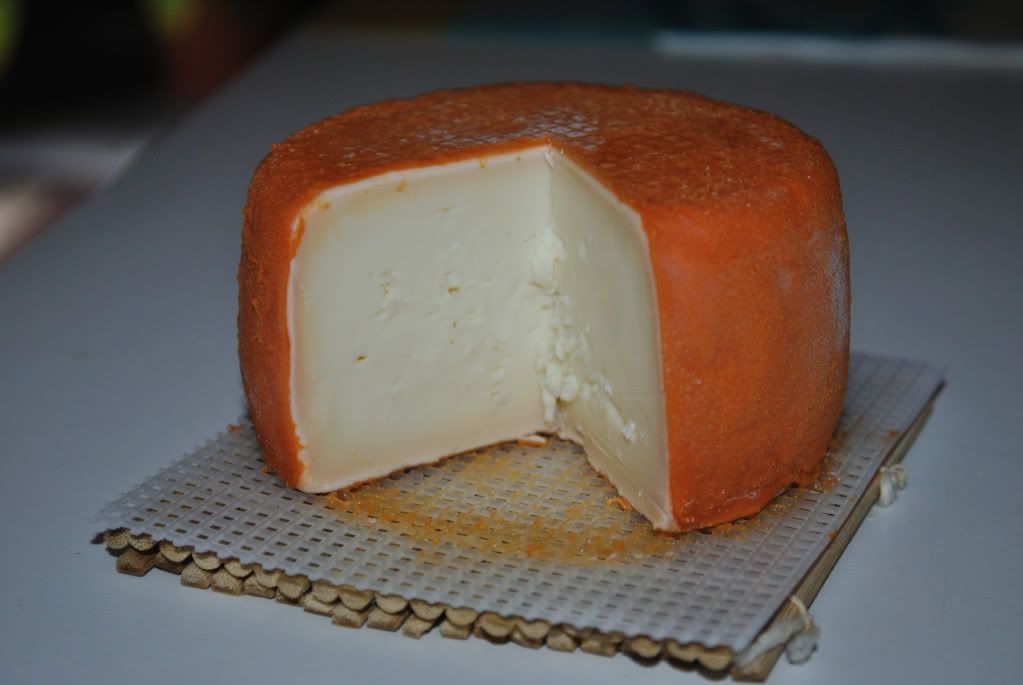Ok people this is my last update on the raclette.
I cut it last week and it was a little salty but that wasn't the problem.
It taste pretty bad I'm just guessing that is because it was on a closed cooler most of the day, so every time I opened it had a very strong odor something like methane gas (I think that was the bacteria's bio product) so the cheese end up tasting like that.
The other reason for it's odd flavor I think is because the bacteria never dried completely and was too thick that it ens up overpowering the flavor of the cheese.
I would like to know what did I do wrong, and how can I fix it for the next batch??
Here are some pictures for you to see the thickness of the bacteria, and how the cheese looks like.
By the way the cheese end's up on the trash can it was completely uneatable.


